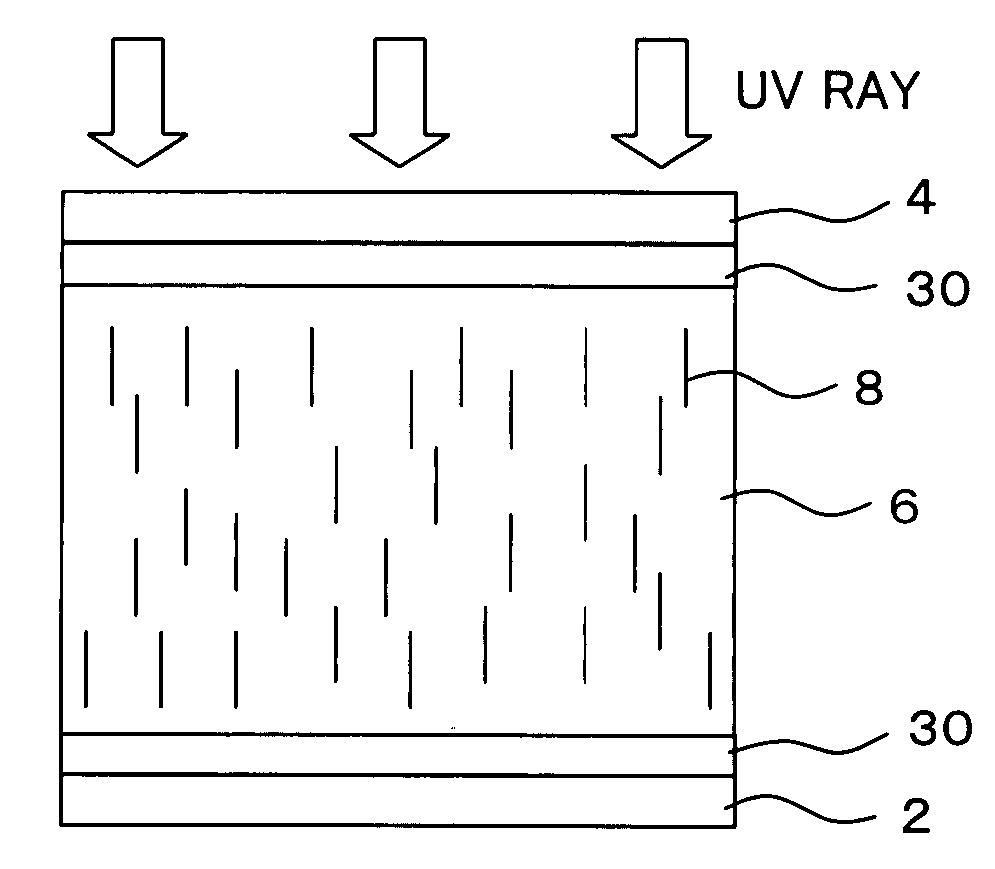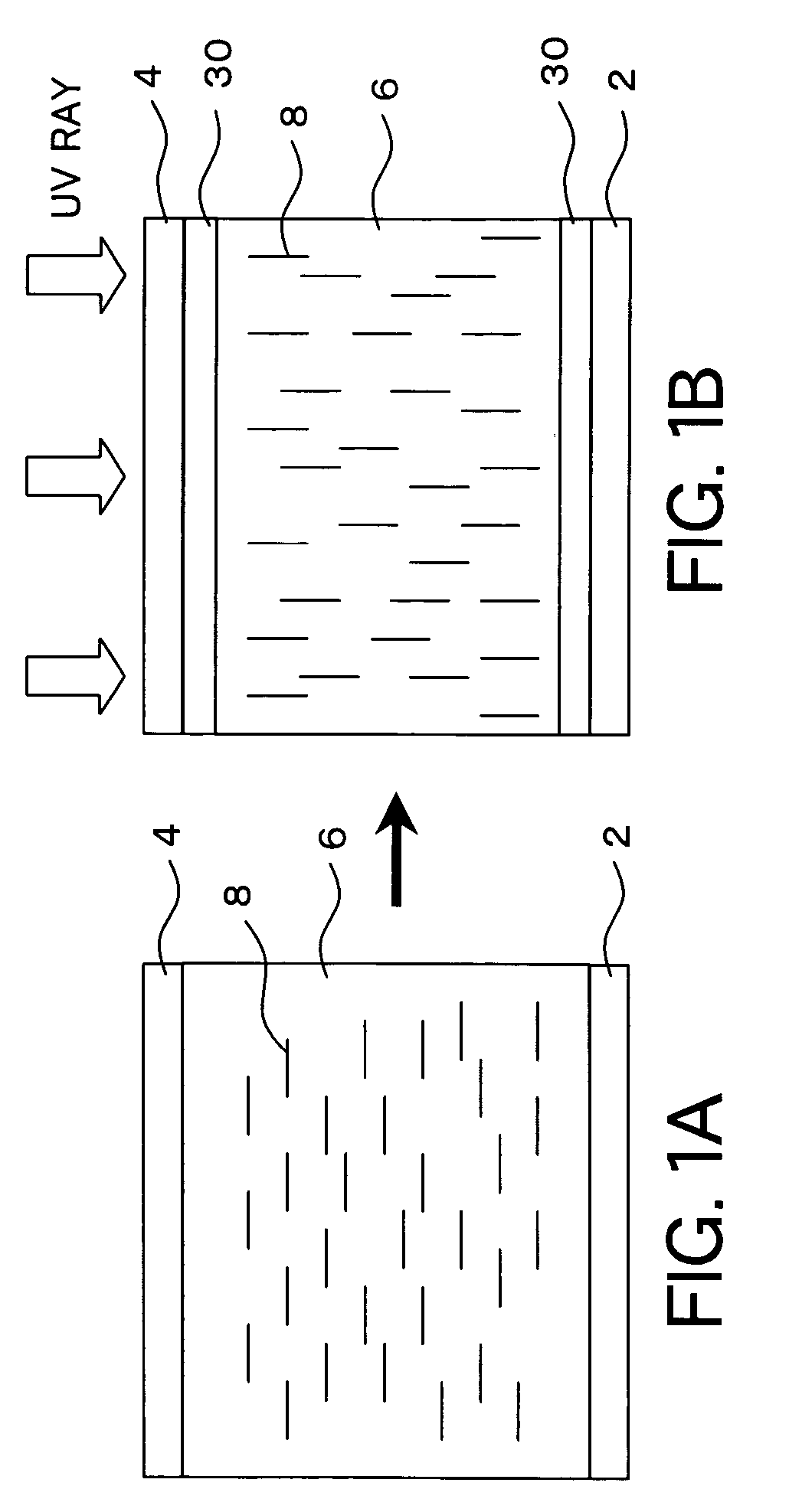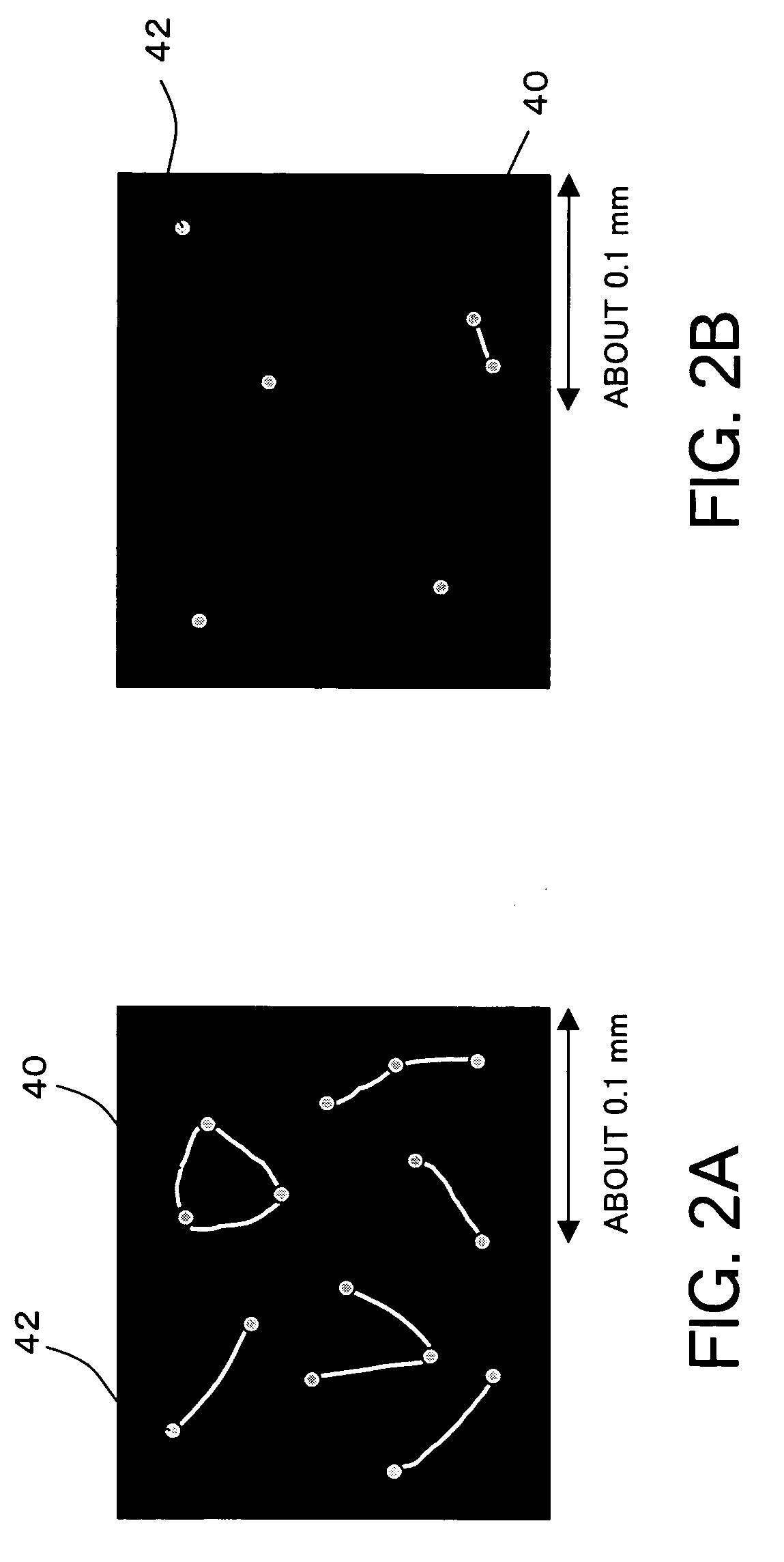Liquid crystal display device and method of producing the same
a display device and liquid crystal technology, applied in the direction of instruments, chemistry apparatus and processes, transportation and packaging, etc., can solve the problems of poor viewing angle characteristics of the display device of the tn mode, increase the cost of the member, and reduce the production. , to achieve the effect of good liquid crystal alignment and reduction of production costs
- Summary
- Abstract
- Description
- Claims
- Application Information
AI Technical Summary
Benefits of technology
Problems solved by technology
Method used
Image
Examples
first embodiment
[0043] A liquid crystal display device and a method of its production according to a first embodiment of the invention will now be described with reference to FIGS. 1 to 9. FIG. 1 schematically illustrates the constitution of a liquid crystal display device and a method of its production according to the embodiment. Referring, first, to FIG. 1A, liquid crystals 6 into which a polymerizable component is mixed and having a negative dielectric anisotropy are sealed between a pair of substrates 2 and 4. In this embodiment, the substrates 2 and 4 have not been coated with a vertical alignment film. Therefore, the liquid crystal molecules 8 in this step are aligned nearly in parallel with the substrate surfaces. Referring next to FIG. 1B, the liquid crystals 6 are irradiated with an ultraviolet ray (or visible ray) to polymerize the polymerizable component. The polymerizable component contains a polyfunctional monomer having a symmetrical structure. Therefore, an ultraviolet ray-cured pro...
example 1-1
[0068] A lauryl acrylate was dissolved at a mass mol concentration of 1.3×10−4 mols / g in the negative-type liquid crystals A manufactured by Merck Ltd. Next, a bifunctional monomer was dissolved at a concentration of 1.3×10−5 mols / g which was one-tenth of the above mass mol concentration in the liquid crystals in which the lauryl acrylate had been dissolved to prepare mixed liquid crystals. Eight kinds of bifunctional monomers a to h shown in FIGS. 3A to 3H were used to prepare eight kinds of mixed liquid crystals. Further, pairs of glass substrates forming electrodes of ITO were so stuck together that the cell thickness was 4.25 μm thereby to prepare a plurality of empty cells. No alignment film was formed on the two glass substrates. Next, the eight kinds of mixed liquid crystals were injected into the empty cells respectively and were sealed to prepare eight kinds of evaluation cells. Thereafter, the mixed liquid crystals of the evaluation cells were irradiated with an ultraviole...
example 1-2
[0072] A lauryl acrylate was dissolved at a mass mol concentration of 1.3×10−4 mols / g in the negative-type liquid crystals A manufactured by Merck Ltd. Next, a bifunctional monomer was dissolved at a concentration of 1.3×10−5 mols / g which was one-tenth of the above mass mol concentration in the liquid crystals in which the lauryl acrylate has been dissolved to prepare mixed liquid crystals. As the bifunctional monomers, there were used the monomer (a) shown in FIG. 3A and the monomers (i) to (k) shown in FIGS. 4A to 4C respectively to prepare four kinds of mixed liquid crystals. Further, a pair of glass substrates forming electrodes of ITO were stuck together so that the cell thickness was 4.25 μm thereby to prepare a plurality of empty cells. No alignment film was formed on the two glass substrates. Next, the four kinds of mixed liquid crystals were injected into the respective empty cells and were sealed to prepare evaluation cells in a plurality of numbers for each kind of the mi...
PUM
| Property | Measurement | Unit |
|---|---|---|
| wavelength | aaaaa | aaaaa |
| wavelengths | aaaaa | aaaaa |
| wavelength region | aaaaa | aaaaa |
Abstract
Description
Claims
Application Information
 Login to View More
Login to View More - Generate Ideas
- Intellectual Property
- Life Sciences
- Materials
- Tech Scout
- Unparalleled Data Quality
- Higher Quality Content
- 60% Fewer Hallucinations
Browse by: Latest US Patents, China's latest patents, Technical Efficacy Thesaurus, Application Domain, Technology Topic, Popular Technical Reports.
© 2025 PatSnap. All rights reserved.Legal|Privacy policy|Modern Slavery Act Transparency Statement|Sitemap|About US| Contact US: help@patsnap.com



